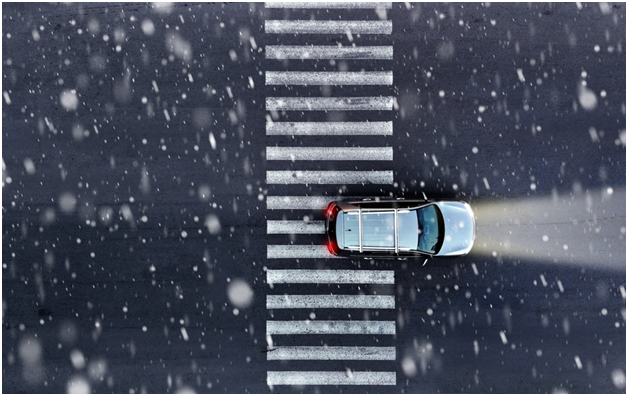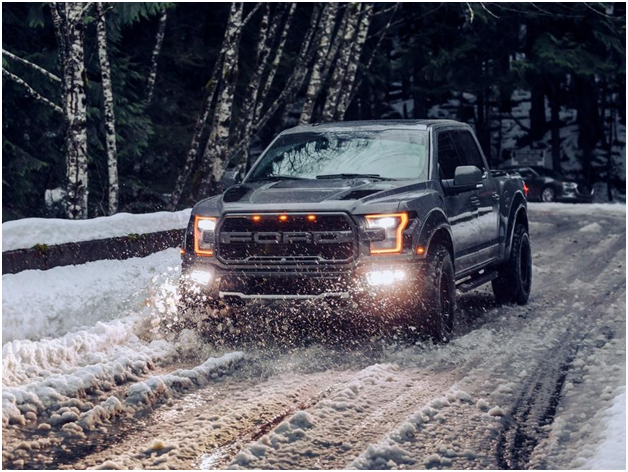10 Tips for Driving in Colder Weather

Source: Varavin88/Shutterstock.com
Diesel engines are especially vulnerable to seasonal shifts. Oil loses viscosity as the ambient temperature drops, reducing lubrication and fuel pressure. Water separates from fuel, spreading corrosion. The battery utilizes more energy to heat the hair and fuel, leading to longer start times. These issues can leave the arterial pathways of your engine clogged with debris, resulting in costly repairs come spring. Start preparing your vehicle for the cold now to minimize disruptions to your routine.
Treat Your Fuel
Cold fuel sheds water molecules that oxidize the tank, pump and injectors, leaving metal shavings throughout the system. Paraffin wax in No. 2 fuel releases sticky carbon deposits that can clog various passageways so it’s important to know information like what temperature diesel gels.
Stations switch to the No. 1 winter blend as the temperature drops, but your tank might still be full with No. 2. Use winter fuel additives regardless of fuel type to prevent gelling. Replace aging fuel system parts before winter gets in full swing to avoid mechanical failure.

Source: Marian Weyo/Shutterstock.com
Maintain the Oil System
Sludge-like oil grinds the starting process to a halt as you and the engine wait for fuel and oil pressure to reach the required PSI to trigger combustion. Every diesel needs regular oil changes to restore the oil’s lubricating properties, but winter weather demands more frequent changes. Instead of changing every 5,000 to 7,000 miles, resupply every 1,000 miles or maintain the flow. Use synthetic blends that better retain viscosity. The oil cooler that recycles the oil through the system can crack amid rapid temperature fluctuations. Replace the oil cooler on vehicles with 100,000 miles or more.
Change Filters
All your filters — fuel, air, diesel particulate filter and oil — need more frequent changes as the debris piles up. Metal shavings, carbon deposits and soot are bound to increase when fluids separate, gel and break down. Check for blocks as pressure and efficiency drop to ensure the liquid can flow at full capacity.
Swap Tires
Your summer tires should be stored until spring, but even some all-season tires can fail to latch onto snowy roads as the inches stack up. The treads that maintain traction get sanded down with friction, making them less effective in the winter. Upgrade to snow tires with treads over 10″ thick to maximize contact with the ground.
Warm the Battery
Cold weather also slows the transfer of electricity. Car batteries lose up to 60% of their power at zero degrees Fahrenheit. This may not be an issue with gas engines, but diesels need the extra charge to heat air and fuel until it’s hot enough to burn using glow plugs. Store your battery indoors or install a battery warmer to insulate it from the nightly lows. Check the charge level to see if your unit needs to be replaced.
Watch DEF Levels
Diesel exhaust fluid treats the exhaust to prevent the spread of air pollution. It’s likely to freeze as the thermostat reaches zero, but it should remain a liquid inside the tank. However, excess containers sitting in storage may be unusable. Keep a fresh supply insulated to top off the tank when it gets low.
Keep Parts Handy
Every part has a relatively fixed expiration date. Using them any longer can feel like a game of Russian Roulette. You’re begging fate for something to go wrong. Order spare truck engine parts for older models that will hit these markers in the coming months so you can quickly replace them as problems appear.
Go for Longer Rides
Diesel engines need to get up to high speeds and drive more than 15 minutes for various automated maintenance processes to kick in, including DPF regeneration. It also gives the oil a chance to circulate through multiple systems. Take yours for a spin on the highway once a week and minimize short trips that mostly spread whatever’s collected in the tank.

Source: Brandon Woyshnis/Shutterstock.com
Be Vigilant
Slight changes in performance, fuel economy and acceleration can indicate impending part failure. The check engine light will alert you if oil, fuel or air pressure drops too low, but you shouldn’t depend on the vehicle to speak up when problems appear. The chemical changes mentioned above can spread problems without tripping the alarms and quietly build until a clog occurs.
Spend 15 minutes checking the quality of your fuel, oil and filters before long trips to see what’s happening behind the scenes. Listen for unusual sounds when starting, accelerating and braking. See if the exhaust is leaking smoke to spot leaks.
Prepare for the Worst
Even the best maintenance routine can leave you stuck when a significant winter storm shuts down local infrastructure. Bring essentials to survive a day in your car amid dropping temperatures, including a roadside repair kit, first aid supplies, food, water, scraper, shovel, traction pads, spare clothes and emergency blankets to keep warm. Learn about the signs of hypothermia and carbon monoxide poisoning and have emergency information handy to call for help.
Winter Driving 101
Your car doesn’t appreciate the cold any more than you do. Internal combustion engines have no problem staying warm once they start; the trick is compressing and heating the necessary ingredients to trigger combustion. Do everything you can to insulate your ride from temperatures below 0 degrees Fahrenheit when it’s not in use. Warming the garage or finding a place to park it indoors will save you time, money and stress so you can focus on safe driving.




